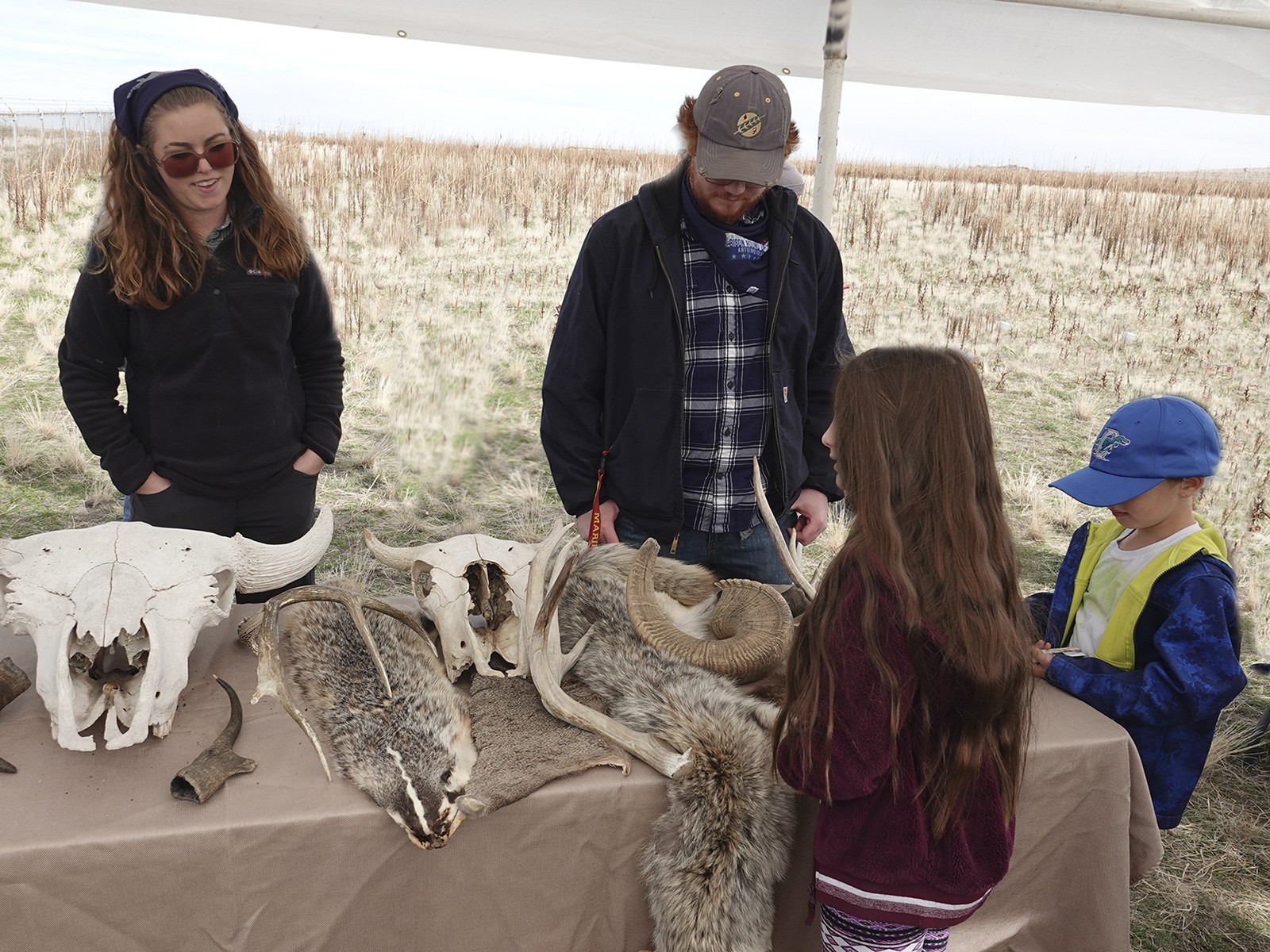Busting Bison Myths: Wildlife Society Assists with Education at Annual Bison Roundup
By Lael Gilbert |
Video by Taylor Emerson, Digital Journalist, University Marketing and Communications.
Moving across the sagebrush landscape, more than 200 horseback wranglers moseyed through stands of juniper and around rocky outcrops. Before them, they pushed a line of lumbering bison to the north, an occasional whoop from a rider encouraging the animals along at a slow pace. It wasn’t a scene from a classic Western movie—made more obvious by seeing the bevy of eager photographers perched on camp chairs along the asphalt highway. The 700 bison were being rounded up and corralled as part of the annual event at Antelope Island State Park, which this year was supported by volunteers from the student chapter of the Wildlife Society in the S.J. & Jessie E. Quinney College of Natural Resources.
“The round-up is a great opportunity for the public to learn more about the ecosystem on Antelope Island and how wildlife management actually works on the ground,” said Lily Martindale, a volunteer and leader in USU’s student chapter of the Wildlife Society. “We hope that when people learn about conservation efforts like this, they will more fully appreciate our natural resources and think about their role in conserving those resources.”
In the first phase of the roundup, volunteers focused on education. They offered visitors an up-close view of bison physiology, and shared information about plants, birds and mammals native to this island in the Great Salt Lake. The event drew hundreds of people, both locals and international visitors. Martindale and others interacted with visitors as they waited for the bison to move along the final stretch, demonstrating the dissection of (sterilized) owl pellets found on the island and extracting rodent vertebrae and jawbones.
“I enjoyed sharing information with the participants,” said Jamie Dye, volunteer and Wildlife Society mammal working group lead. “It's awesome that so many people show up for the roundup, it’s a great opportunity to share what we know.”
In the second phase of the roundup bison are sorted and separated individually to receive vaccinations. They received health screenings, including checks for pregnancies, parasites, and other health issues. The USU student team led public tours at the corals that allowed visitors a remarkably close encounter with these wild animals. Once the bison are screened, they are either released onto the island or kept in the corral.
The manageable herd size for bison on the island is between around 500-550 animals, and each year between 100-200 calves are born into the herd. With no natural predators capable of taking down a bison, managers at the state park need to artificially reduce the size of the herd to balance the food supply and keep the animals healthy. By selling excess bison at a public auction, park staff are able to keep the herd within a number the habitat can support, said Trish Ackley, park naturalist.
The Wildlife Society works to promote wildlife conservation and management, and to ensure sustainable wildlife populations in healthy ecosystems. The USU student chapter of the Wildlife Society is active in volunteering and service efforts across the state.
The annual bison roundup at Antelope Island State Park was supported this year by volunteers from the student chapter of the USU Wildlife Society.
The Wildlife Society works to promote wildlife conservation and management; the USU student chapter is active in volunteering and service efforts across the state.
WRITER
Lael Gilbert
Public Relations Specialist
Quinney College of Natural Resources
435-797-8455
lael.gilbert@usu.edu
CONTACT
Lael Gilbert
Public Relations Specialist
Quinney College of Natural Resources
435-797-8455
lael.gilbert@usu.edu
TOPICS
Wildlife 141stories Animals 90storiesComments and questions regarding this article may be directed to the contact person listed on this page.









